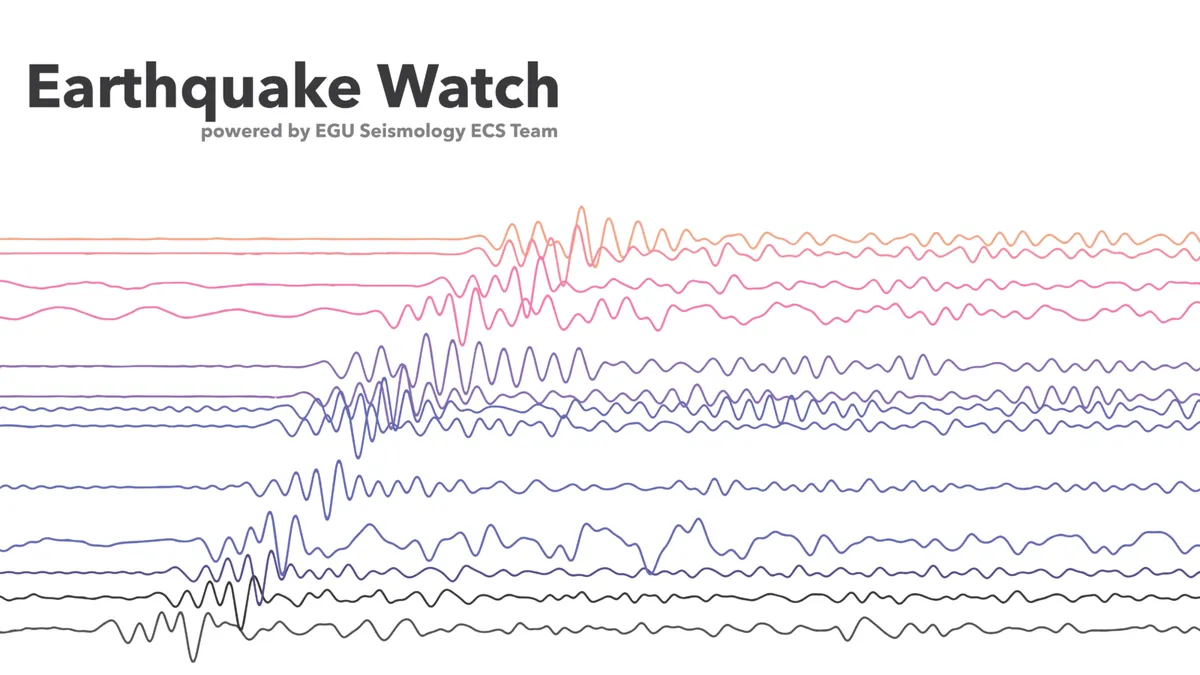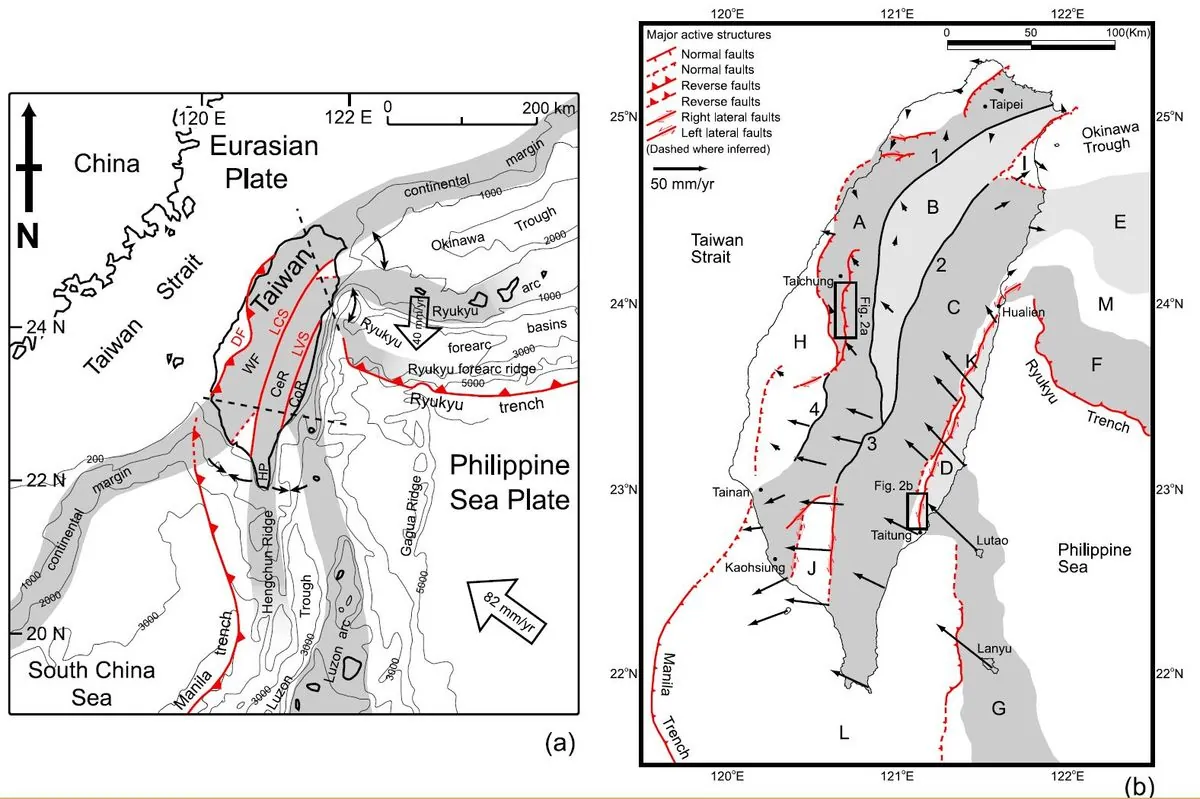5.7 Magnitude Quake Shakes Taiwan's Northeast, No Immediate Damage Reported
A 5.7 magnitude earthquake struck off Taiwan's northeastern coast, shaking buildings in Taipei. No immediate damage was reported, and subway services continued at reduced speeds.

On August 15, 2024, a seismic event of 5.7 magnitude occurred off the northeastern shore of Taiwan, as reported by the island's central weather administration. The earthquake's epicenter was located near Yilan County, with its effects felt in the capital city, Taipei.
The tremor, which had a depth of 9 km, caused buildings in Taipei to shake. However, initial reports indicated no immediate damage. As a precautionary measure, subway services in the capital continued to operate at reduced speeds following the quake.
Taiwan's geographical position makes it particularly susceptible to seismic activity. The island nation is situated near the junction of two tectonic plates, specifically on the boundary between the Eurasian Plate and the Philippine Sea Plate. This location places Taiwan squarely within the Pacific Ring of Fire, a region notorious for its frequent earthquakes and volcanic eruptions.

The country's vulnerability to earthquakes has led to the development of advanced monitoring and response systems. Taiwan's Seismological Center employs a network of over 700 seismometers to track seismic activity across the island. Additionally, an early warning system has been implemented, capable of alerting residents seconds before an earthquake strikes.
Despite experiencing an average of 2,200 earthquakes annually, most seismic events in Taiwan are minor. In fact, approximately 18,500 small earthquakes occur each year that are too weak to be felt by humans. However, the island has faced significant seismic events in its recent history.
Just four months prior to this incident, in April 2024, Taiwan experienced its most severe earthquake in at least 25 years. That event resulted in nine fatalities and left more than 900 individuals injured. This recent major quake served as a stark reminder of the potential dangers posed by seismic activity in the region.
The memory of the devastating 1999 Jiji earthquake, which claimed over 2,400 lives, has had a lasting impact on Taiwan's approach to earthquake preparedness. Since then, the nation has significantly strengthened its building codes and invested in earthquake-resistant infrastructure. For instance, Taipei 101, the country's tallest building, features a massive tuned mass damper designed to counteract earthquake-induced movements.
Yilan County, the area closest to the epicenter of the recent 5.7 magnitude quake, is known for its hot springs—a geological feature resulting from the region's tectonic activity. The county, like the rest of Taiwan, is subject to the island's complex fault systems, with the Chihshang Fault being one of the most active.
Taiwan's commitment to earthquake preparedness extends beyond infrastructure. The country regularly conducts earthquake drills to ensure its population is ready for potential disasters. Moreover, the National Center for Research on Earthquake Engineering continues to advance the nation's understanding and mitigation strategies for seismic events.
As Taiwan navigates its geologically active environment, the country's Central Weather Bureau remains vigilant, issuing real-time earthquake reports and alerts to keep the public informed and safe.
"The 5.7 magnitude earthquake occurred at a depth of 9 km off the northeastern shore of Taiwan. We continue to monitor the situation closely and urge citizens to stay informed and prepared."
This recent earthquake, while significant, demonstrates Taiwan's ongoing resilience and preparedness in the face of its seismically active location.


































